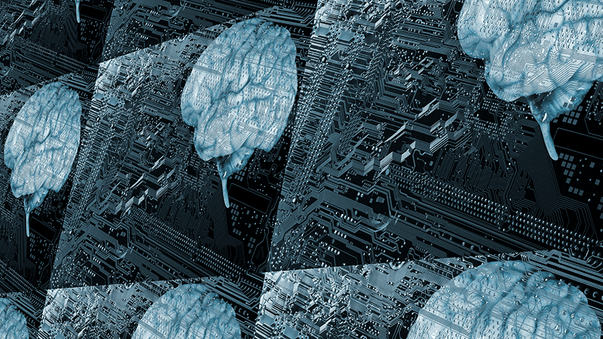Restoring Sight to the Blind

Restoring sight to the blind, with relatively cheap technology that everyone can afford, would be really wonderful. Researchers at the Laboratory of Organic Electronics of Linköping University and Tel Aviv University are working on artificial retinas that may in the future restore sight to blind people.
“We have shown that our device can be used to stimulate not only neurons in the brain but also neurons in non-functioning retinas,” said David Rand, postdoctoral researcher at Tel Aviv University.
Social media fans, rejoice: A scientific study found that taking a photo each day and posting it online supports improved wellbeing. Another study found that, when posting personal stories to social media like Facebook, older adults feel more empowered and less isolated. For pet lovers, a study found that having pets is good for mental wellbeing. For everyone else, frequent sauna bathing is associated with a reduced risk of stroke, according to a new study.
Cheap retinal prosthesis may restore sight to blind people. Scientists at Linköping University and Tel Aviv University are developing a simple retinal prosthesis that converts light impulses into electrical signals, which stimulate nerve cells. Fabricated using cheap and widely-available organic pigments used in printing inks and cosmetics, the prosthesis consists of tiny pixels like a digital camera sensor on a nanometric scale. The researchers hope that the new prosthesis, described in a study published in Advanced Materials, could restore sight to blind people.
Toward one-shot treatment of hemophilia. Researchers at Salk Institute have demonstrated, with CRISPR gene editing and experiments on laboratory mice, that hemophilia B can be treated for life with one single injection containing disease-free liver cells that can produce their missing clotting factor. According to the scientists the research results, published in Cell Reports, demonstrate the value in combining stem-cell reprogramming and new gene-modifying approaches to treat genetic diseases, and could permit developing treatments for hemophilia and other, related genetic disorders. The researchers cautioned, however, that there’s still a long way to go before clinical applications for human patients.
New, promising theranostic strategies for pancreatic cancer. The Society of Nuclear Medicine and Molecular Imaging reports that German researchers have developed a novel diagnostic and therapeutic (theranostic) procedure for patients with ductal pancreatic adenocarcinoma, a deadly cancer with an extremely poor prognosis (five-year survival rate of less than 5 percent) and limited treatment options. A research paper published in Journal of Nuclear Medicine describes a theranostic approach that, using molecular imaging and a hitherto under-explored receptor, could identify potential responders and allow more effective treatment of pancreatic cancer.
Next-generation vaccines could be effective against mutating viruses. Scientists at the University of Exeter have found that immune cells can fight different strains of the same virus, a discovery which could help transform vaccine development. According to the results of a study published in eLife, the immune system can produce memory cells with the ability to recognize different strains of the same virus, rather than just one. The findings could permit producing vaccines that keep their effectiveness when a virus mutates.
Optogenetics and holography to implant perceptions in the brain. Scientists at UC Berkeley have developed a device to read neuron activity and respond by activating neurons, which could be used, for example, to move prosthetic limbs or simulate lost perceptions. A research paper published in Nature Neuroscience shows that projecting a holographic image into the top layer of the brain activates dozens of neurons hundreds of times a second to simulate real patterns of activity. Equipped with new, fast on/off optogenetic switches, neurons are tricked into perceiving things not there.
Butterfly-inspired nanotechnology for eye-monitoring implants. Engineers at Caltech have developed a synthetic analogue for eye implants, inspired by tiny nanostructures on transparent butterfly wings, which makes the implants more effective and longer-lasting. A research paper published in Nature Nanotechnology describes a transparent photonic nanostructure inspired by the longtail glasswing butterfly and demonstrates its use in intraocular pressure (IOP) sensors in vivo. The nanostructure unlocks the potential of this implant, making it practical for glaucoma patients to test their own eye pressure every day, and at the same time protects the implants.
More Articles
Don't miss a beat! In our Pulse Newsletter, Thrivous curates the most important news on health science and human enhancement, so you can stay informed without wasting time on hype and trivia. It's part of the free Thrivous newsletter. Subscribe now to receive email about human enhancement, nootropics, and geroprotectors, as well as company news and deals.
Read more articles at Thrivous, the human enhancement company. You can browse recent articles in Thrivous Views. See other Pulse Newsletter articles. Or check out an article below.
-
CRISPR as a High-Performance Word Processor
Researchers at the Joint Institute of Metrology and Biology (JIMB) have developed an enhanced CRISPR gene editing system, dubbed MAGESTIC ...
-
Brain Preservation, Short-Term and Long-Term
The recently announced breakthrough in brain preservation for future brain emulation, and the following controversies, continue to capture the attention ...


